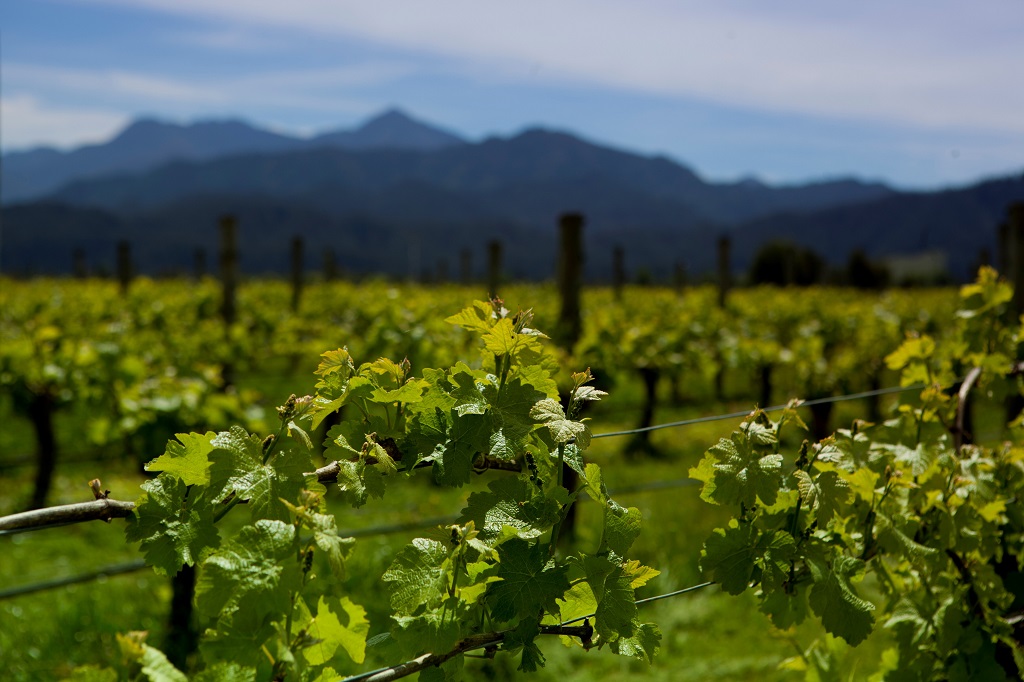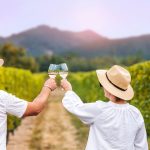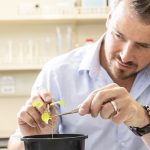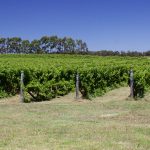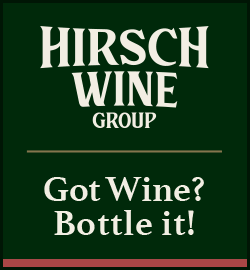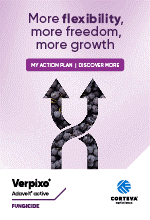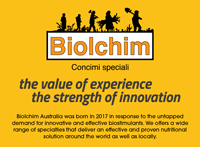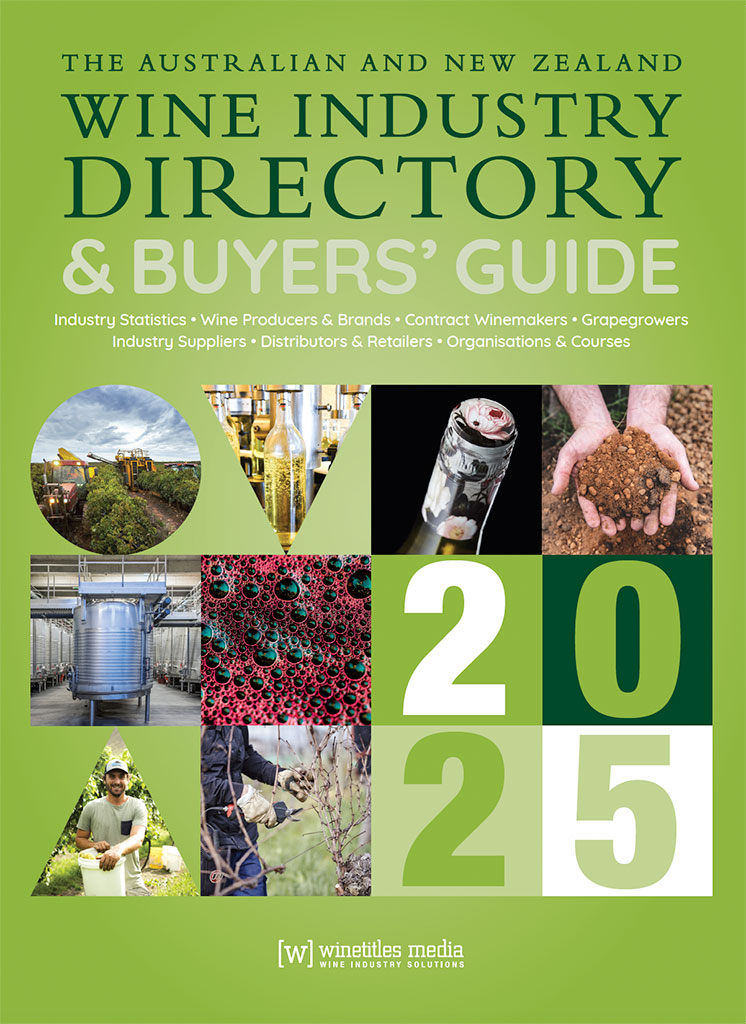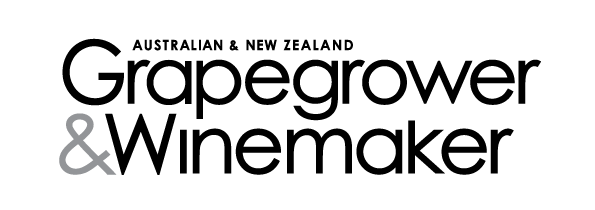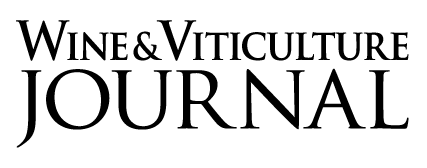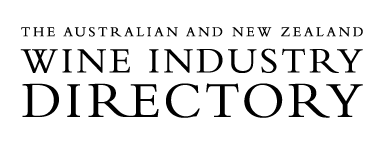Photo: NZ Winegrowers
Sauvignon Blanc has become the powerhouse of the New Zealand wine industry, almost to the point that you cannot bring up one without the other. However, its history in the country is not as long as one would expect, and many are working to ensure the future of the country’s most important grape variety. Harrison Davies explores why Sauvignon Blanc has come to define New Zealand.
Sauvignon Blanc is to the New Zealand wine industry what salt is to pepper.
The grape has its homeland in France, which particular part of France is somewhat up for debate. Both Bordeaux and the Loire claim ownership of the variety.
Outside of the Old World, Sauvignon Blanc is found pretty much everywhere, finding its largest plantings in the US. New Zealand, however, is a close second.
Sauvignon Blanc represents just over 70 per cent of New Zealand’s wine production, with an annual production of roughly 270,000 tonnes, according to New Zealand Wine.
While Sauvignon Blanc is found in basically every region of New Zealand, Marlborough makes up the lion’s share of production.
The variety was brought to New Zealand back in the ‘70s from cuttings taken from the University of California, Davis, and the clone that was brought over has been traced back to cuttings from a top Sauternes estate, Château d’Yquem.
The first vineyard holdings were bought in Marlborough in the mid-‘70s
Winemakers at the time did not see much value in the variety, Chardonnays were the flavour of the time, but some thought the cuttings could do well in the climate.
The first marketable quantity of New Zealand Sauvignon Blanc was produced in 1974, at Matua Valley’s first winery site in Swanson, Auckland (now The Hunting Lodge).
It wasn’t long before more growers followed and producers quickly found Sauvignon Blanc grown in New Zealand, particularly in Marlborough, to be varietally unique.
The majority of the
parcels underwent
slow, cool fermentation
in stainless, with 10%
of the blend fermented
at warmer temps in
older French oak demi-muids.
– Anna Flowerday
The variety has robust examples in New Zealand, with wines from the country typically demonstrating flavours of nettles and green apple alongside classic aromatics of grass cuttings and featuring high acid.
Renwick based Te Whare Ra winemaker and co-owner Anna Flowerday described Sauvignon Blanc as the “essence of New Zealand”.
“We are growing in a relatively cool climate with a maritime influence from our proximity to the coast and this gives the wines vibrancy and energy,” she said.
“The other major factor is the long sunshine hours relative to the latitude we are at – this gives the gorgeous array of ripe fruit and fleshiness that is so attractive and exciting.
“Then finally is the diurnal range and our cooler night-time temps over summer – this helps retain natural acidity and gives Marlborough SB great line and length. In essence Marlborough and SB was meant to be.
“If you consider that the first vines of the modern era were only planted here in 1973 and look at where we have come in only 50 years – it is truly remarkable and says so much about how well-suited Sauvignon Blanc is to Aotearoa New Zealand.”
Sauvignon Blanc accounts for over 80 per cent of New Zealand’s wine exports, with exports increasing year on year.
Ciatti reported in their January report that demand for New Zealand Sauvignon Blanc, particularly from Marlborough, was strong in key markets, particularly the US, UK and Canada.
So how did New Zealand come to be the home of Sauvignon Blanc?
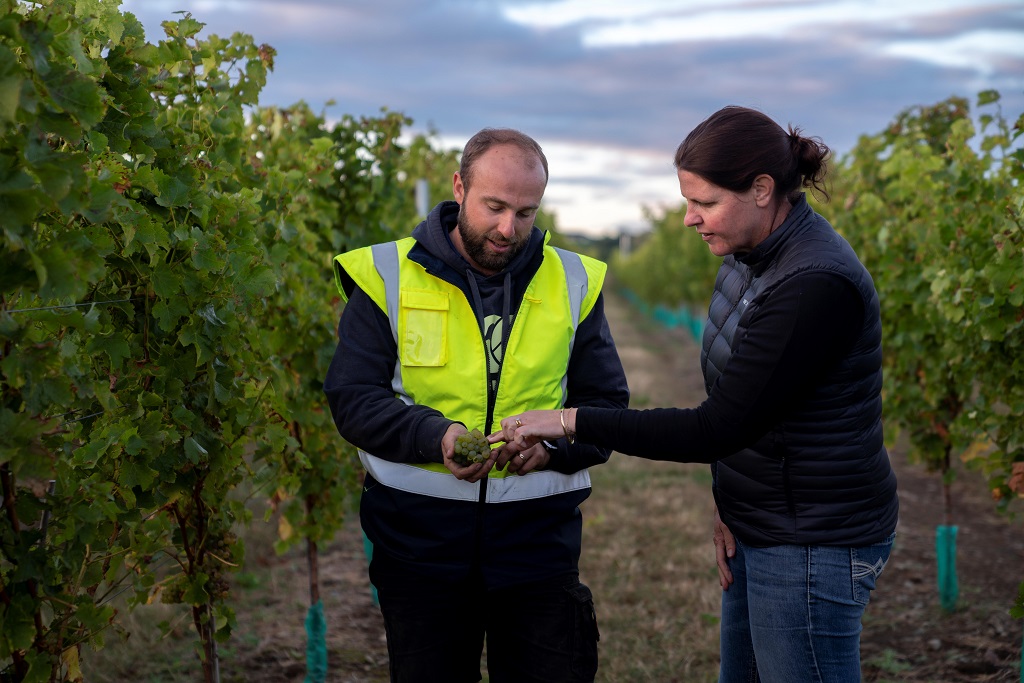
business manager Emma Taylor inspect the
first Sauvignon Blanc grapes at harvest in April.
Photo: Craigmore Viticulture
Climate and terroir
As a result, winemaking
is now more efficient
and consistent, with
each machine capable
of processing 15 tonnes
of grapes per hour on
a reduced footprint
compared to previous
machinery. – Jeremy Tod
New Zealand has a wide variety of climates that produce a vast range of styles, but the industry is dominated by the Marlborough region, located on the northern part of the South island.
Within the region, there are three key sub-regions all with their own microclimates and characteristics that contribute to unique notes in Sauvignon Blanc.
The Wairau Valley is the furthest north and covers a range of drier, cooler inland sites as well as sites that experience a maritime influence.
The Southern Valleys are the furthest inland subregion and features heavier, more clay-rich soils than Wairau Valley.
Awatere Valley is the furthest south and the highest elevation of the three major sub regions and features sometimes blustery conditions.
Wine producers are driven to the region as a whole due to the variety of sites and the distinction between wines created in vineyards only kilometres apart.
Flowerday explained why they source their Sauvignon Blanc from sites in two sub-regions.
“We source our Sauvignon Blanc from two of the main Marlborough sub-regions – the Wairau Valley where our home block is and where the winery is located – and also from a family vineyard in the cooler Awatere Valley which is further south,” she said.
“The growing conditions in the Awatere are characterised by cooler temperatures and slower ripening, which is all important for flavour development and ripe acidity. The wines from this sub-region tend to be more restrained in their youth but have great texture, structure, and longevity.
“The blocks in the Wairau experiences the warmer days, longer sunshine hours and a bigger diurnal range.
“These climatic differences result in wines which have lovely fleshiness and texture, and which are characterised by riper tropicals and stone-fruit with a lovely line of minerality.”
Sauvignon Blanc is an early ripening variety and, as such, the early part of the Vintage is a busy time in New Zealand.
Flowerday said that managing the Sauvignon Blanc vintage was a year-long endeavour.
“For us the growing season begins with winter pruning. This is such a crucial time to set the correct yield for the right vine balance,” she said.
“Then we usually see budburst in the middle of September so we have a few nervous weeks over that period where we can experience frosts that will damage the young growth.
“Then as the growth starts to increase, we get busy with shoot thinning and leaf plucking and bunch thinning if necessary.
“We also must keep the shoots positioned vertically so we are going through several passes of lifting wires. Flowering happens in December and then for the second half of summer it is all about protecting the crop.”
Giesen winemaker Jeremy Tod mirrored Flowerday’s thoughts about the Sauvignon Blanc vintage and walked through the start of the year for them.
“Our vineyard sites are scattered throughout Marlborough adding complexity to the final product,” he said.
“The majority of [our] vines are trained to three or four cane VSP system. Leaf plucking during the growing season to increase airflow through the canopy and sun exposure to the fruit which assists with acid degradation and disease management.”
Hawke’s Bay, located at the southern tip of the North Island, also has significant Sauvignon Blanc plantings and this year has weathered the storm that was Cyclone Gabriel, which caused huge disruptions to the vintage in February.
Craigmore Sustainable Viticulture business manager, Emma Taylor, said the first harvest in April was faced with some trepidation following the devastation of Cyclone Gabriel.
“We were incredibly fortunate to narrowly avoid the worst of the cyclone and are extremely happy with the first harvest,” said Taylor.
“The fruit was clean and well balanced, displaying zesty fruity flavours with a hint of acidity. We harvested just a small portion of the first plantings to pick just over 17 tonnes of fruit. I am looking forward to seeing how these characteristics are displayed in the finished product in the winery.”
Springhill Vineyard is the first major viticulture development in the region and is planted with predominately Sauvignon Blanc grapes.
“For as long as I’ve been in the viticulture industry, I’ve been looking for land in the Central Hawke’s Bay because the climate is perfect for aromatic wine grapes such as Sauvignon Blanc with beautiful free draining soil,” said Taylor.
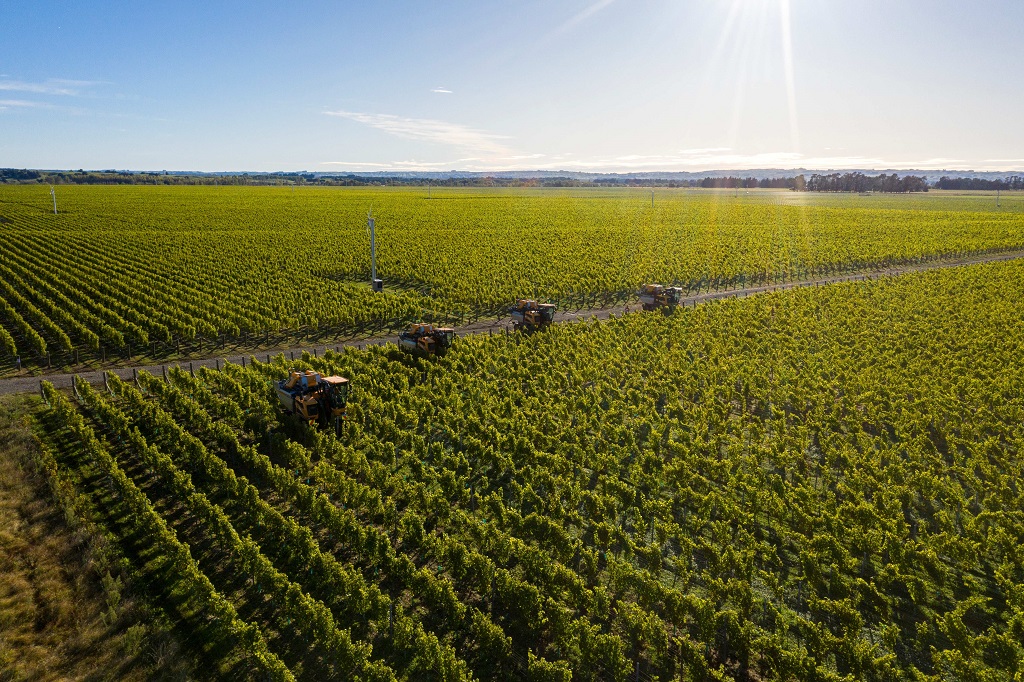
Photo: Craigmore Viticulture
In the cellar
Both winemakers indicated that the winemaking process sought specifically to highlight the fruit and flavours of the region.
Both winemakers also described their winemaking process with terms like “simple” and “classic”, indicating that the terroir of the regions and of the country is honoured and highlighted in the wines.
This is likely what makes New Zealand Sauvignon Blanc stand out so much on the world stage, as the characteristics of site are so heaving emphasised in the winemaking process.
“Our aim with this, our classic style of Marlborough Sauvignon Blanc, is to put 100% effort into making a wine that silences all the doubters, and which restores faith in this fabulous region and the amazing quality of the wines from here,” Flowerday said.
“Our 2022 TWR Sauvignon Blanc is a blend from three specially selected vineyards in two different sub-regions of Marlborough.
“Two of the vineyards are in the Wairau valley – Flowerday family and Te Whare Rā and the third is in the upper Awatere Valley – Shamrock. This release was all grown and made by the Flowerday family.
“The larger parcels of fruit for this wine were select machine picked and the home block portion was all hand-picked and hand sorted. The free-run and soft pressings parcels were combined for fermentation.
“The majority of the parcels underwent slow, cool fermentation in stainless, with 10% of the blend fermented at warmer temps in older French oak demi-muids.
“All parcels spent time on fine lees, post ferment for texture. This wine has not been fined and is suitable for vegans and vegetarians and anyone else who loves authentic, hand-made wines.”
Tod echoed many of the methods that Flowerday had explored in her explanation, and said that they goal at Giesen was to protect the aromatic potential the fruit has when it arrives to the winery.
Part of this was an investment in Foodtec 700 Decanters, imported specially from Europe, streamlined the winemaking process at Giesen in an effort to highlight fruit and increase production volumes.
“This signalled a big step for winery technology in New Zealand, with only one or two other producers innovating in this area,” Tod reflected on the decanters.
“It also meant significant change in how wines are produced at Giesen; these decanters mean that two key steps in the existing winemaking process are replaced, with juice clarification via floatation (known as cold settling) and lees filtration now superseded by decanter technology.
“This means no need for presses or clarifying juice; this ability to process fruit much faster in turn gives more flexibility to harvest at the optimal time. The shorter process reduces the chance of oxidation, improving the quality of the final blend.
“Using decanters keeps the fruit fresh, bright, and flavourful, meaning they are particularly beneficial for Sauvignon Blanc and other white wines that New Zealand is renowned for. The resulting reduction in water usage is also a win for Giesen’s sustainability focus.
“As a result, winemaking is now more efficient and consistent, with each machine capable of processing 15 tonnes of grapes per hour on a reduced footprint compared to previous machinery.”
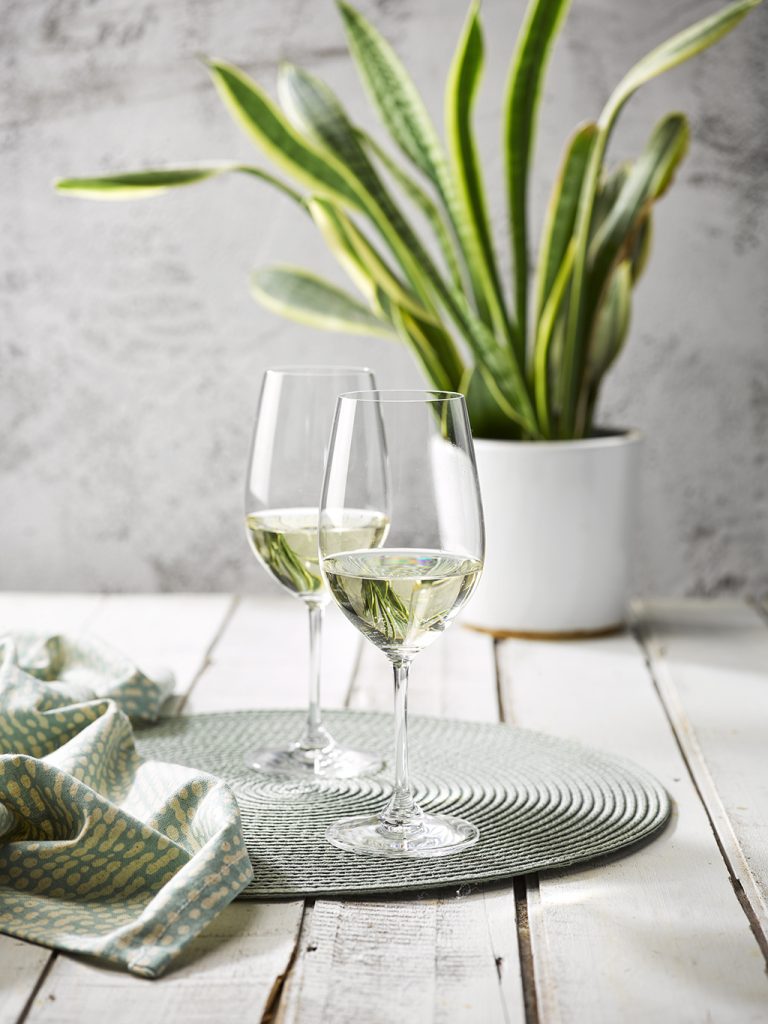
To view the current issue of the Grapegrower & Winemaker, visit our Current Issue page.

